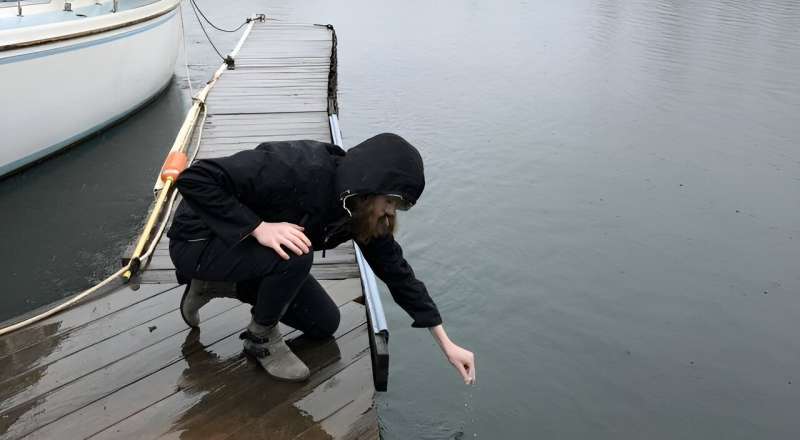This article has been reviewed according to Science X's editorial process and policies. Editors have highlighted the following attributes while ensuring the content's credibility:
fact-checked
trusted source
proofread
Undergraduate researcher discovers unexpected diversity in key river microorganisms

Once a week for the past year, Kylee Brevick could be found at two particular spots on the Willamette and Columbia rivers, taking samples of water for testing. The undergraduate biochemistry major (and environmental science minor) was undertaking an independent research project with support from PSU's BUILD EXITO program, which helps students gain biomedical research experience and skills.
In the course of her project, Kylee discovered several different populations of an aquatic microorganism known as picophytoplankton. These have been well documented in lakes and oceans but not, until now, in rivers. The organisms, which perform photosynthesis and carbon fixation, are crucial in supporting aquatic life.
"We know a lot about these cells in lake systems and in the ocean. But we don't really know about their dynamics in river systems as much. And definitely not in the local river systems here," said Anne Thompson, principal investigator of PSU's Microbial Ecology Lab, where Kylee has a position as a BUILD EXITO Scholar.
Kylee's novel contribution to the body of knowledge about picophytoplankton is a significant achievement for an undergraduate, and could result in a scientific publication. She presented her work at the Portland State University Summer Research Symposium on September 21. For more details, see her research poster: "Discovery of diverse freshwater picophytoplankton populations via flow cytometry."
"Phytoplankton do in water what plants do on land. So they capture the energy from the sun and convert that into biomass that feeds all kinds of animals. They also are responsible for transforming carbon from what's in the air to carbon that we can actually hold and touch. And if we think globally, phytoplankton do the most of that job on the earth. Since they have such a vital role, we really need to know their sensitivity. So how do they change? What's their genetic diversity? How does their function change when their ecosystem changes?" Thompson said.
Kylee documented several distinct populations of picophytoplankton in both the Willamette and the Columbia, and identified how each population serves slightly different functions, using different wavelengths of sunlight to drive nutrient cycles and carbon fixation.
Kylee generated a unique dataset by taking weekly samples over the course of a year. She linked her data on the phytoplankton in the rivers systems to environmental data, which is provided for the public by the U.S. Geological Survey (USGS).
"There are USGS stations that are constantly sampling both rivers, the Columbia and the Willamette. They collect mostly environmental data like temperature, turbidity, how fast the water is moving, and what kind of nutrients are present. Just all around environmental data that I can look at. And so I wanted to sample near those stations, so that it was relatively applicable," Kylee said.
Kylee, who designed the research project with Thompson's guidance, was particularly interested in seeing how the picophytoplankton react to changing conditions over time.
"We could have just taken a couple of samples from the river and seen that there are lots of different picophytoplankton types, and that would have been really exciting in itself. But what Kylee did was this persistent time course, and so she was able to show that they have different sensitivities.
"This could help us develop numeric models to really understand the system, and be able to predict how the system will change with for example, pollution or toxic cyanobacterial blooms or temperature changes—for example, Kylee sampled through a heat wave this summer. And she was really the driving force behind that commitment to the time series," said Thompson.
Provided by Portland State University





















